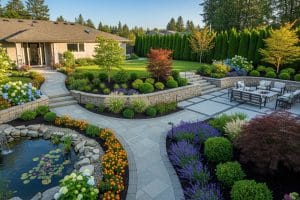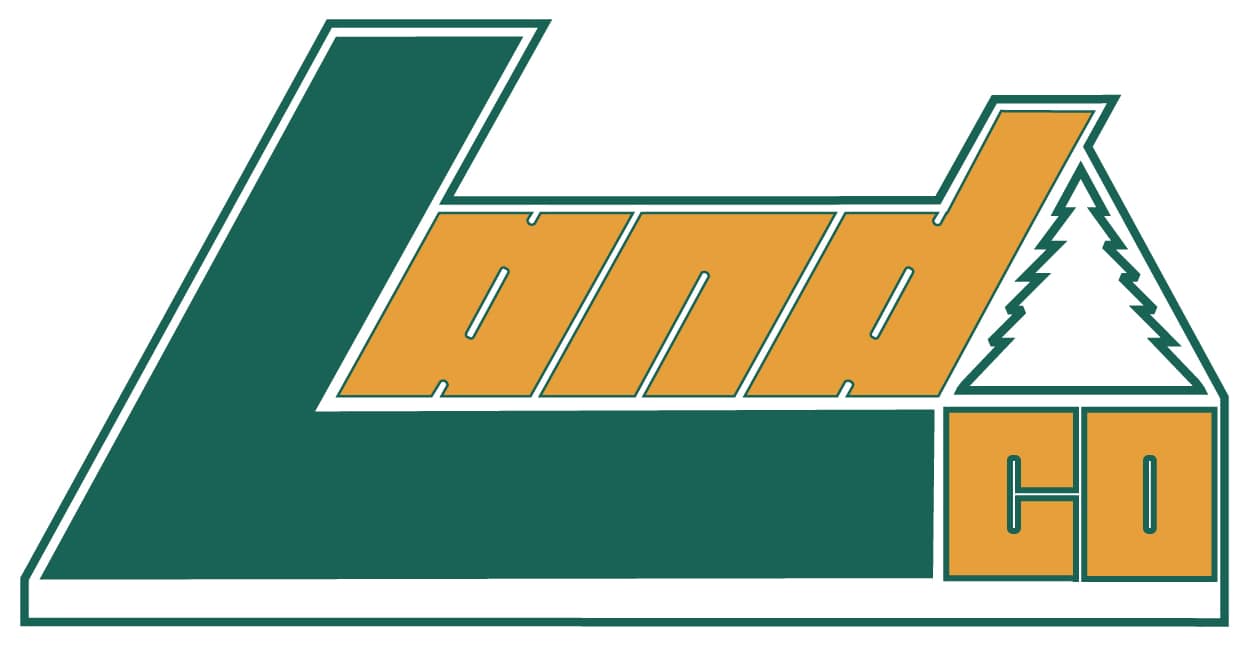 Embarking on a landscape installation project can be both thrilling and daunting. Whether you envision a serene garden retreat, a vibrant outdoor entertainment area, or a functional space for family gatherings, understanding the landscape installation process is crucial. This guide will walk you through each phase of the journey, from initial consultations to the final walkthrough, ensuring you know what to expect every step of the way.
Embarking on a landscape installation project can be both thrilling and daunting. Whether you envision a serene garden retreat, a vibrant outdoor entertainment area, or a functional space for family gatherings, understanding the landscape installation process is crucial. This guide will walk you through each phase of the journey, from initial consultations to the final walkthrough, ensuring you know what to expect every step of the way.
Understanding Landscape Installation
Landscape installation involves transforming outdoor spaces to enhance their aesthetic appeal, functionality, and value. This process encompasses various elements, including design, plant selection, hardscaping, and ongoing maintenance. By grasping the fundamentals of landscape installation, homeowners can make informed decisions that align with their vision and budget.
The Importance of Planning
Before diving into the installation, careful planning is essential. A well-thought-out plan not only streamlines the process but also helps avoid costly mistakes. Consider the following aspects during the planning phase:
-
- Defining Your Goals: What do you want to achieve with your landscape? Whether it’s creating a tranquil retreat or a lively entertainment space, having clear goals will guide your decisions.
- Budgeting: Establish a realistic budget that includes all aspects of the project, from design to installation and maintenance.
- Researching Local Regulations: Familiarize yourself with local zoning laws and regulations that may affect your landscape design.
Initial Consultation
The initial consultation is a pivotal step in the landscape installation process. This meeting sets the tone for the entire project and allows you to communicate your vision to the landscape professional.
What to Expect During the Consultation
During the consultation, you can expect the following:
-
- Property Assessment: The landscape designer will evaluate your property, taking note of its unique features, challenges, and opportunities.
- Vision Sharing: This is your chance to express your ideas, preferences, and any specific features you want to incorporate, such as water features, pathways, or seating areas.
- Problem Identification: Discuss any existing issues, such as drainage problems or areas that lack privacy, and explore potential solutions.
Defining the Project Scope
At the end of the consultation, you and the designer will outline the project scope. This includes identifying key elements to be included in the design, such as:
-
- Plant Selection: Choosing the right plants that thrive in your climate and suit your aesthetic preferences.
- Hardscaping Features: Deciding on materials and designs for patios, walkways, and retaining walls.
- Budget Discussion: Openly discussing your budget will help the designer create a plan that aligns with your financial expectations.
The Design Phase
Once the initial consultation is complete, the design phase begins. This stage is where your vision starts to take shape on paper.
Custom Design Development
During the design phase, the landscape designer will create a detailed plan that reflects your preferences and the unique characteristics of your property. Key components of this phase include:
-
- Site Plans: Detailed drawings that outline the layout of plants, hardscaping, and other features.
- 3D Renderings: Some designers may provide 3D visualizations to help you better understand how the finished project will look.
- Material Selection: Choosing high-quality materials for hardscaping elements, ensuring durability and aesthetic appeal.
Timeline for Design Completion
The design phase typically takes between four to six weeks, depending on the complexity of the project. Larger projects with multiple features may require more time for refinement.
Estimating Costs
After finalizing the design, the next step is estimating the costs associated with the project. This phase is crucial for ensuring that the project stays within budget.
Detailed Cost Breakdown
During the estimating phase, you can expect:
-
- Project Phases Overview: A comprehensive breakdown of costs for each stage of the installation process.
- Subcontractor Quotes: Collaborating with trusted subcontractors to ensure quality workmanship at competitive prices.
- Material Costs: Guidance on selecting materials that align with your budget and design vision.
Importance of Transparency
Open communication about costs is vital. Ensure that you understand what is included in the estimate and discuss any potential additional expenses that may arise during the installation.
Permitting Process
Before any physical work begins, obtaining the necessary permits is essential. This process can vary depending on local regulations and the scope of your project.
Navigating Local Regulations
The permitting phase may take two to four weeks, depending on your municipality. Key considerations include:
-
- Types of Permits Required: Depending on your project, you may need permits for grading, drainage, pools, or hardscaping features.
- Working with Professionals: Collaborating with a landscape professional familiar with local regulations can expedite the permitting process.
Preparing for Delays
Be prepared for potential delays during the permitting phase. Early submission of finalized plans can help avoid setbacks and keep your project on track.
Installation Phase
The installation phase is where your vision truly comes to life. This is the moment you’ve been waiting for, as your outdoor space transforms before your eyes.
What Happens During Installation
During the installation, you can expect:
-
- Site Preparation: Clearing the area, grading the land, and preparing the soil for planting and hardscaping.
- Planting and Hardscaping: The installation team will begin planting trees, shrubs, and flowers while also constructing hardscaping features like patios and walkways.
- Irrigation Installation: If your design includes an irrigation system, this will be installed to ensure your plants receive adequate water.
Timeline for Completion
Most landscape installation projects take approximately two to three weeks to complete, depending on the complexity and size of the project. Regular communication with your landscape professional will help keep you informed about progress.
Final Walkthrough
Once the installation is complete, a final walkthrough is conducted to ensure everything meets your expectations.
What to Expect During the Walkthrough
During the final walkthrough, you can expect:
-
- Inspection of Work: The landscape professional will review all aspects of the project, ensuring that everything has been completed to your satisfaction.
- Addressing Concerns: This is your opportunity to voice any concerns or ask questions about the installation.
- Care Instructions: You will receive guidance on how to care for your new landscape, including watering schedules and maintenance tips.
Importance of Feedback
Providing feedback during the final walkthrough is essential. This helps the landscape professional understand your experience and make any necessary adjustments.
Maintenance Considerations
After your landscape installation is complete, ongoing maintenance is crucial for preserving its beauty and functionality.
Developing a Maintenance Plan
Consider the following aspects when developing a maintenance plan:
-
- Regular Watering: Establish a watering schedule based on the needs of your plants and the climate in your area.
- Weeding and Pruning: Regularly check for weeds and prune plants as needed to promote healthy growth.
- Seasonal Care: Be aware of seasonal changes and adjust your maintenance routine accordingly.
Hiring Professionals vs. DIY
Decide whether you want to handle maintenance yourself or hire professionals. While DIY maintenance can save money, hiring experts ensures that your landscape remains in top condition.
Enhancing Curb Appeal
A well-designed landscape not only enhances your outdoor space but also boosts your home’s curb appeal.
Key Elements of Curb Appeal
To maximize curb appeal, consider the following elements:
-
- Symmetry and Balance: Create a visually appealing layout by ensuring symmetry and balance in plant placement and hardscaping features.
- Color and Texture: Incorporate a variety of colors and textures to add depth and interest to your landscape.
- Lighting: Use outdoor lighting to highlight key features and create a welcoming atmosphere during the evening.
Long-Term Benefits
Investing in your landscape can yield long-term benefits, including increased property value and improved quality of life. A beautiful outdoor space encourages outdoor activities and enhances your overall enjoyment of your home.
Embarking on a landscape installation project is an exciting journey that can transform your outdoor space into a personal oasis. By understanding the various phases of the process, from initial consultations to final walkthroughs, you can set realistic expectations and ensure a successful outcome. With careful planning, open communication, and a commitment to maintenance, your landscape will thrive for years to come, providing beauty and functionality for your home.
We Provide Landscape Design and Build Services
Landscape design and build services encompass the seamless integration of creative vision and practical implementation to transform outdoor spaces into aesthetically pleasing and functional environments. This comprehensive approach involves conceptualizing and planning the layout, vegetation, hardscape elements, and outdoor amenities, followed by the skilled execution of the design plan.
> Learn More
Contact us (859-609-9278) for a free consultation!
—
Abou t LandCo Group
t LandCo Group
LandCo Group provides residential and commercial Landscaping services in the Greater Cincinnati / Northern Kentucky area. Our services include landscape design, lighting design, retaining walls, paver patios, concrete work, & more.
> Learn More
